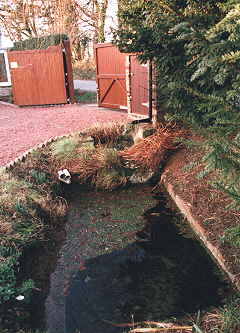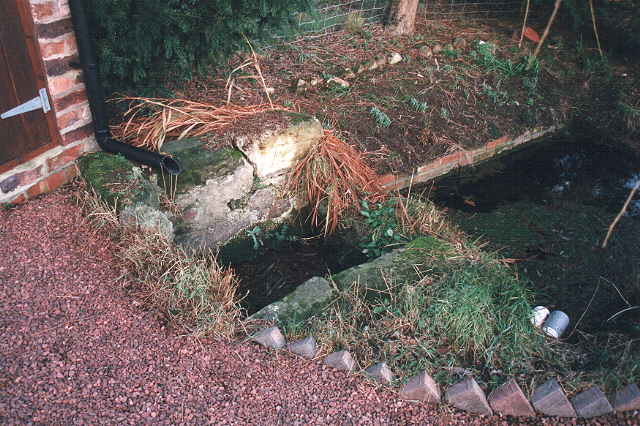|
 St
John's Well - Moxby St
John's Well - Moxby
(SE 6049 6512)
Thomas Gill describes St John's well as
it appeared in the early 1800's (1) ......
"About a mile distant from the nunnery, at the corner of the
wood called St John's Wood, was formerly an ancient building, consisting
of a small dome of stone and brick, over a spring, well known in the
neighbourhood as "Saint John's Well". There is still
discernible the remains of a causeway leading from the nunnery in the
direction of this well. The water is reported to possess medicinal
properties, and there is a large and convenient stone cistern built on
the east side into which the water is admitted for the purpose of
bathing.
It was much resorted to in the days of superstition, and there are still
the remains of stone steps for the more easy descent thereto. Near the
mouth which admits the water into the bath is a large stone called the
wishing stone, and many a faithful kiss has this stone received from
those who were supposed never to fail in experiencing the completion of
their desires, provided the wish was delivered with full devotion and
confidence"
Today the well is in the garden of a
private house, the stone chamber around the spring still exists, as does
the open air bath, from where the water flows away into a nearby stream
ditch. The mention of a small dome of stone and brick over the
well is interesting and perhaps looked similar to the St
John's Well at Harpham.
The site of the nunnery mentioned by Thomas Gill is now Moxby Hall Farm,
a mile to the north-west of the holy well. The nunnery was established
around the 12th century and was dedicated to St John, which is likely to
explain this holy wells dedication and the well at St
John's Well at Stillington.
Blind Keld
(SE 6018 6497)
The first edition O.S. map also shows a spring named "Blind
Keld - Chalybeate" by the road to the west of St John's well. Today
this spring is piped under the road and a small of trickle of water
flows into a field drainage ditch. The water appears to have slight
chalybeate properties so perhaps its waters were used as a treatment for
eye ailments?
(1)Thomas Gill, Vallis Eboracensis. 1852.
|
 St
John's Well - Moxby
St
John's Well - Moxby